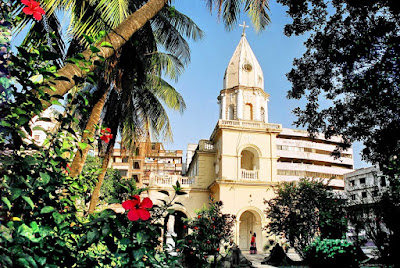The Armenian Church is a Historically Significant Architectural Monument
The Armenian Church may be a historically significant architectural
monument situated within the Armanitola area of old Dhaka, Bangladesh. The
church bears testimony to the existence of a big Armenian community within the
region within the 17th and 18th centuries.
Following the domination of their homeland by Persian powers
of the time, Armenians were sent by their new rulers to the Bengal region for
both political and economic reasons. Although the Armenian presence in South
Asia is now insignificant, their presence in Dhaka dates back to the 17th
century. Armenians came to Dhaka for business. In Dhaka, Armenian merchants
traded in jute and leather, and profitability in these businesses convinced
some to maneuver permanently to Bangladesh. the world where they lived became
referred to as Armanitola.
 |
| The Armenian Church |
In 1781, the now famous Armenian Church was built on
Armenian Street in Armanitola, then a thriving downtown . the location was an
Armenian graveyard before the church was built, and therefore the tombstones
that have survived function a chronicle of Armenian life within the area.
Agaminus Catachik, an Armenian, gave away the land to create the church. Michel
Cerkess, Okotavata Setoor Sevorg, Aga Amnius, and Merkers Poges helped build
the church.
In the 50 years following the church's construction, a tower
was erected on its western side. Allegedly, the clock might be heard four miles
away, and other people synchronized their watches with the sound of the tower's
bell. The clock stopped in 1880, and an earthquake destroyed the tower in 1897.
The church is 750 feet (230m) long . it's four doors and 27
windows. the most floor is split into three parts: a pulpit enclosed by
railings, a middle section with two folding doors, and a neighborhood separated
by a wooden fence for seating. there's a spiral staircase resulting in the
second floor of the church. there's a square tower on the church with a
"shonkhonil" (special sort of minar utilized in India to point out
respect) minar on the highest of it. The aisle of the church is 14 feet wide.
There are some beautiful paintings within the church, by the artist Charles
Port. there's an area behind the pulpit used for baptism, with a 3 foot deep
marble baptistry .

Post a Comment